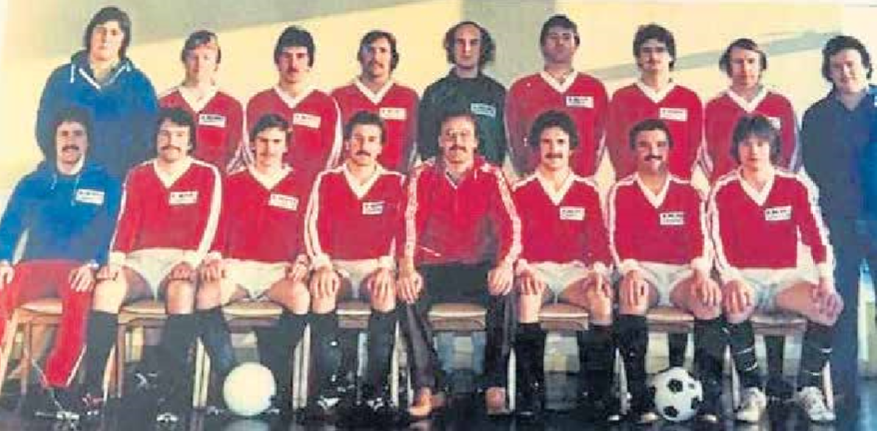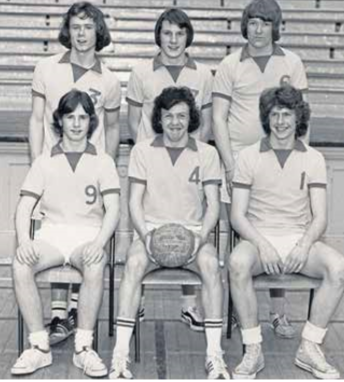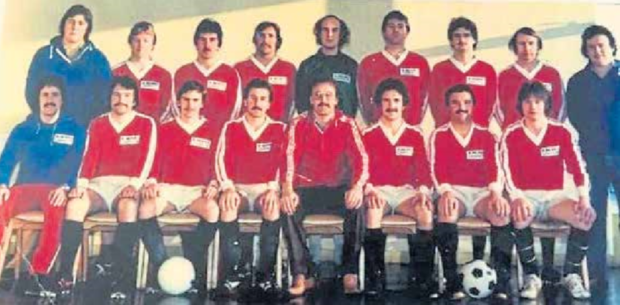Rob Boag’s love, other than football, is boxing.
And the fight game is the subject of the latest contribution from our regular correspondent.
He opened: “During one meander, I came upon a phrase, or perhaps it came upon me.
“It was ‘The Sweet Science’ and I recognised it also as the title of a book I read some decades ago.
“I am a hoarder of books, they spill over from my bookshelves into boxes, and assorted size piles litter my bedside table.
“It was first published in 1951, and written by Joe Liebling. It is, arguably, the greatest book ever composed on the sport of boxing, and on boxers themselves during that American heyday of (Jack) Dempsey, (Joe) Louis, Sugar Ray (Robinson) and (Rocky) Marciano.”
Dundonian Rob, now living in Canada, continued: “The phrase was coined in 1810 by an English entrepreneur, sports promoter and journalist, Pierce Egan.
“He was a man for all seasons who wrote in a magazine that boxers were tough, forward-thinking and tactical, and described the sport as ‘The Sweet Science of Bruising’.
“Although boxing was outlawed then, Pierce arranged fights in various locations, spread the word and spectators arrived in thousands.
“One major bout in 1811 was Thomas Cribb (champion of England) v Tom Molineaux (USA).
“Twenty thousand people turned out to watch this illegal match, and an artist made sketches of the ring action, to be published in the morning edition of London newspapers, and caught the drama brilliantly when Cribb knocked out Molineaux with a tremendous right to the jaw.
“Both fighters were forward thinking and tactical, but there was only one winner.”
Rob revealed he once asked his uncle, Joe Boag – at one time a professional boxer – if fighters had a plan when they stepped into the ring.
He went on: “Joe nodded and said: ‘Every fighter had a plan when he climbed through the ropes and stepped into the ring. And he stayed with it – until he got hit’.
“And, with a wry smile, Joe quoted Rabbie Burns . . . The best laid schemes o’ boxers an’ men/gang aft a-gley.”
I’ve come across some tales regarding football referees, which I’ll share in the coming weeks.
It was reported in 1980 that . . .
During a Highland League Cup tie between Forres Mechanics and Elgin City, the fun and games started when the referee accidentally dropped his red card.
This led to a tempting opportunity for Forres player-manager Harry McFadden to raise a few laughs.
Much to the delight of the crowd, Harry picked up the card and showed it to the referee in a manner which suggested he needed an early bath.
Unfortunately, the match official did not see the funny side of Harry’s antics and booked him for “bringing the game into disrepute”.
Continuing quirky tales from around the world of football . . .
Every now and again, many of us like a flutter on a football match.
Whether it is a full-time score prediction or the number of goals scored, betting has become a worldwide phenomena when it comes to football.
One chap managed to grab the headlines for his outrageous punt.
According to the BBC, Adrian Hayward placed a bet which eventually paid out in the most extraordinary circumstances.
In 2006, Hayward put a bet on of nearly $500 on former Liverpool midfielder Xabi Alonso scoring a goal from the halfway line.
As far as the odds were concerned, they were well and truly stacked against Hayward as it was a long shot of 125-1 to come to fruition.
Yet, Alonso did exactly just that in an FA Cup game against Luton Town at Kenilworth Road and scored from the halfway line.
As a result, Hayward picked up the princely sum of $50,000 for his troubles.

This is the Dundee Sunday Welfare AFA side Bank Street Athletic from the late 1970s. They did reasonably well back then, but probably should have done a lot better.
Many may blame that on the decisions taken by the manager at the time!
Back row (from left) – Stewart Bearn (committee), John Hastie, Jim Kenneth, Willie Cooper, Rab Benvie, Tam Duncan, Jimmy Murray, Ronnie Hughes, Fred Barr (secretary). Front row – Dave Melvin (coach), Billy Constable, Frank Barker, Iain Treanor, John Brown (manager), Gary Hastie, John Anderson, Stewart Lang.
 Morgan Academy Senior B volleyball team from 1975-76. Back row – A Burgess, J Brown, W Nicoll. Front row – D Reilly, J McGill, D Reid.
Morgan Academy Senior B volleyball team from 1975-76. Back row – A Burgess, J Brown, W Nicoll. Front row – D Reilly, J McGill, D Reid.
Continuing our look back at some of the old Sporting Queries, so popular in the Sporting Post.
In April 1993, ‘KA, Dundee’ asked: What are details of the largest crowds at Hampden Park?
Answer – Hampden holds the record for the attendance at a Home International – 149,547 v England on April 17, 1937.
Other notable crowds –
146,433, Celtic v Aberdeen Scottish Cup Final, April 24, 1937.
143,570, Rangers v Hibs Scottish Cup Semi-Final, March 27, 1948.
135,826, Celtic v Leeds United European Cup Semi-Final, April 15, 1970.
127,621, Real Madrid v Eintracht Frankfurt, May 18, 1960.
